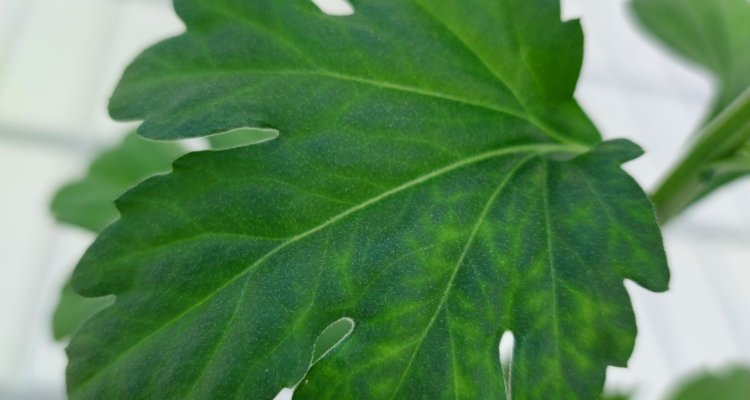
News
Detect viruses at lightning speed with raman spectroscopy
A plant virus consists of proteins and a piece of genetic material (DNA or RNA molecule) and is very small. A virus cannot be seen with the naked eye. After infection, it can take weeks for symptoms to appear, so it often takes a long time before an infection is noticed. The Business Unit Greenhouse Horticulture of Wageningen University & Research is investigating whether the presence of a virus in a crop can be detected earlier with raman spectroscopy. Researcher Corien Voorburg: “If this detection technique works, viruses can be detected much faster by growers.”
A crop responds quickly to infection by a virus. The metabolic activity of the cells changes. WUR is investigating whether this can be detected by using a laser. The scattering of the laser light can be measured: this provides information about the chemical composition of the material. This technique is called raman spectroscopy. Raman spectroscopy is also used, for example, to determine the age of old paintings. The changed cells on the surface of the leaf ensure a different scattering of the light rays. By detecting these changes (with the help of artificial intelligence), a virus infection can be discovered.
To investigate the applicability of raman spectroscopy, WUR conducted experiments with tomato spotted wilt virus (TSWV) in chrysanthemum. This virus is causing major problems in the sector. WUR is investigating whether the change in the leaf caused by the virus can be measured with raman spectroscopy. Voorburg: “Growers or breeders still have to send a sample to a lab for testing if they suspect a virus infection. The result can often take days.”
Voorburg hopes that the technology can eventually be used in a small handheld device, so a grower in a greenhouse can scan the crop and immediately receive an indication of whether the crop may be infected with a virus. “The conditions in a greenhouse are very different than in the laboratory where we now conduct the research. In a greenhouse, a crop is exposed to other variables, such as temperature, insects, and other varieties, which also influence the leaf content. So detecting a virus can be more complex. But it would be valuable if this technology could ultimately be used in the greenhouse, so virus infections can be noticed earlier, and damage and further infections are therefore prevented.”
The research into raman spectroscopy is funded by Wageningen University & Research.